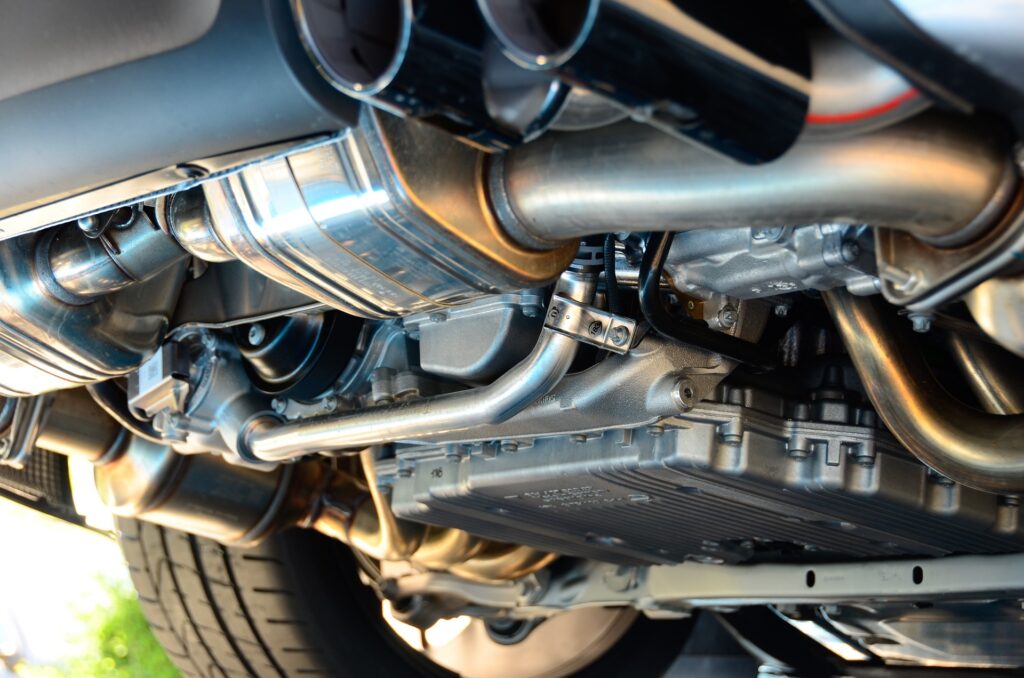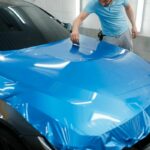Introduction
As a blogger in the automotive niche, I’ve seen and heard it all when it comes to car customization and maintenance. And let me tell you, undercoating is a topic that always comes up in discussions.
If you’re like me, you love to drive your car and keep it looking new for as long as possible. So, what is undercoating, and do you really need it?

In this post, I’m going to answer all your questions about undercoating and explain how it can help you protect your car from rust, corrosion, and other damages.
What is Undercoating?
Undercoating is a process that involves applying a layer of protective coating to the underside of a car, truck, or SUV. The primary goal of undercoating is to protect the undercarriage of the vehicle from rust and corrosion caused by exposure to moisture, salt, and other environmental elements.
Undercoating can be done using different types of materials, including rubberized coatings, oil-based coatings, and wax-based coatings.
Is Undercoating Good for a Car?
Yes, undercoating is excellent for a car because it can help protect the undercarriage from rust and corrosion, which can lead to expensive repairs. It can also help reduce road noise and improve fuel efficiency by reducing the aerodynamic drag caused by the rough surface of the undercarriage.
Additionally, undercoating can provide a more uniform appearance to the undercarriage, making it look clean and new.
What Does Undercoating Do?
Undercoating provides a protective barrier that prevents moisture, salt, and other environmental elements from reaching the metal parts of the undercarriage, which are prone to rust and corrosion.
It also helps reduce the amount of noise and vibration that enters the car cabin by providing a sound barrier.
Additionally, undercoating can improve the fuel efficiency of a car by reducing the aerodynamic drag caused by the rough surface of the undercarriage.
Do You Really Need Undercoating?
Whether you need undercoating or not depends on several factors, such as the location of your car, weather conditions, and the type of roads you drive on.
If you live in an area where the roads are salted in winter or near the coast, undercoating is highly recommended to protect your car from rust and corrosion caused by moisture and salt exposure.
On the other hand, if you live in an area with a dry climate and drive on well-maintained roads, undercoating may not be necessary.
How Long Does Undercoating Last on a Vehicle?
The lifespan of undercoating depends on several factors, such as the type of undercoating used, the age and condition of the car, and the level of exposure to environmental elements.
Generally, oil-based undercoating can last up to 18 months, while rubberized undercoating can last up to five years. However, it’s essential to keep in mind that the lifespan of undercoating can be affected by how often the car is driven and the level of exposure to moisture, salt, and other environmental elements.
What Is the Disadvantage of Underbody Coating?
The primary disadvantage of undercoating is that it can make it difficult to spot rust and corrosion under the car’s surface. Undercoating can also trap moisture, dirt, and other debris, leading to further corrosion and rust damage. Additionally, undercoating can be expensive, depending on the type of material used, and the process can be time-consuming.
Which Is Better Rust Proofing or Undercoating?
When it comes to protecting your vehicle against rust, you have a few different options. Rustproofing and undercoating are two popular choices, but they work in slightly different ways.
Rustproofing typically involves applying a specialized wax or oil to the undercarriage of your vehicle. This coating is designed to repel moisture and prevent rust from forming on the metal surfaces. It’s a popular choice for those who live in areas with high levels of salt or other corrosive materials on the roads.
On the other hand, undercoating is a thicker, rubberized coating that is applied to the undercarriage of your vehicle. It’s designed to absorb impact and noise while also providing protection against rust and other forms of corrosion. It’s a popular choice for those who do a lot of off-roading or drive in areas with rough roads.
So, which one is better? The answer depends on your individual needs and the conditions in which you drive. If you live in an area with lots of salt on the roads, rustproofing might be a better choice for you. But if you do a lot of off-roading or drive on rough roads, undercoating might provide better protection.
Where Should You Not Spray Undercoating?
While undercoating can be a great way to protect your vehicle, there are a few areas where you should avoid spraying it. For example, you should never spray undercoating over existing rust. This will only trap the rust in place and make the problem worse.

You should also avoid spraying undercoating over any areas that need to be accessed for maintenance or repair. This includes areas like brake lines, fuel lines, and electrical connections. If you’re not sure where it’s safe to spray undercoating, it’s always best to consult with a professional.
Does Undercoating Stop Existing Rust?
Unfortunately, undercoating is not a magic solution that can stop existing rust from spreading. If your vehicle already has rust, you’ll need to have it treated and repaired before applying undercoating.
However, undercoating can be a great way to prevent rust from forming in the first place. By providing a protective barrier between your vehicle’s metal surfaces and the elements, undercoating can help prolong the life of your vehicle and keep it looking great for years to come.
Conclusion
In conclusion, undercoating can be a great way to protect your vehicle against rust and other forms of corrosion. By providing a thick, rubberized barrier between your vehicle’s metal surfaces and the elements, undercoating can help prolong the life of your vehicle and keep it looking great for years to come.
While there are some disadvantages to undercoating, such as the potential for trapping moisture and the need for regular inspections, the benefits often outweigh the drawbacks.
If you’re considering undercoating your vehicle, be sure to do your research, consult with a professional, and choose the right product for your individual needs. With proper care and maintenance, undercoating can be a valuable investment in the long-term health of your vehicle.









